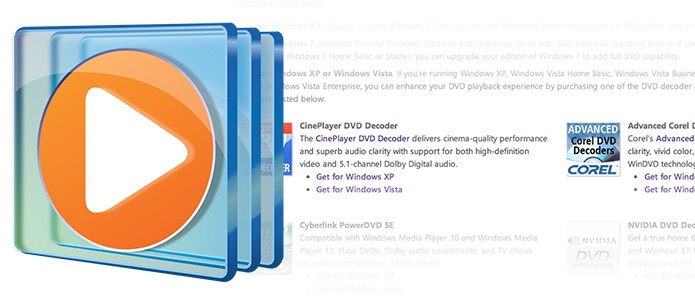

This video and audio codecs pack comes with four different variants, Basic, Standard, Full and Mega respectively, ranging from a small bundle to a large one. No.1: K-Lite Codec PackĪccording to virus and malware tests performed by, K-Lite Codec Pack is a virus-free download which should be safe to use on Windows 10. BTW, Microsoft has officially provided HEVC Video Extension and AV1 Video Extension codecs to help play high resolution and large video files on Windows 10 and Windows 11. This section we've picked out three clean and safe Windows 10/11 codecs packs for 32-bit and 64-bit PC. But we should be careful because some codec packs may be bundled with adware, malware or other harmful things. Google codec packs, and we will be presented with lots of choices. 3 Free Codec Pack for Windows 10/11 32bit and 64bit The most recent versions of the codec objects also enable access to some legacy codecs, including Windows Media Video 7 and 8, Windows Media Screen 7, the older Microsoft MPEG-4 codecs, and the Microsoft ISO MPEG-4 codecs.Part 1.

This codec is often used for software training or support by recording monitor images while computer applications are being used. Video codec optimized for encoding sequential screen shots from computer monitors. For content that is mixed music and speech, this codec can dynamically change the encoding algorithm used, to get optimal quality.Ī video codec that supports four categories of encoded content: Simple Profile, Main Profile, Advanced Profile, and Image. This is the preferred codec for streams consisting mostly of spoken words. CodecĪn audio codec that supports three categories of encoded content: Standard, Professional, and Lossless.Īudio codec optimized for encoding the human voice at high compression ratios. The following table describes the intended uses of the Windows Media codecs. The algorithms used to compress and decompress data for spoken words differ from the algorithms used to compress and decompress music data.

Not only are there different codecs for audio and for video, but also different codecs for different kinds of content that you might want to put into an audio or video file. In some cases the COM objects occupy the same dynamically linked library (DLL).Įvery codec object implements two separate but similar interfaces: InterfaceĬompatible with Microsoft Media Foundation. A codec is usually implemented as a pair of COM objects: one for encoding content, and another for decoding content. The term codec is an amalgamation of the terms compressor and decompressor. For a technical overview of the features of the Windows Media codecs, see About the Windows Media Codecs. This documentation is primarily for developers who want to use Windows Media codecs in their C++-based media applications.


 0 kommentar(er)
0 kommentar(er)
